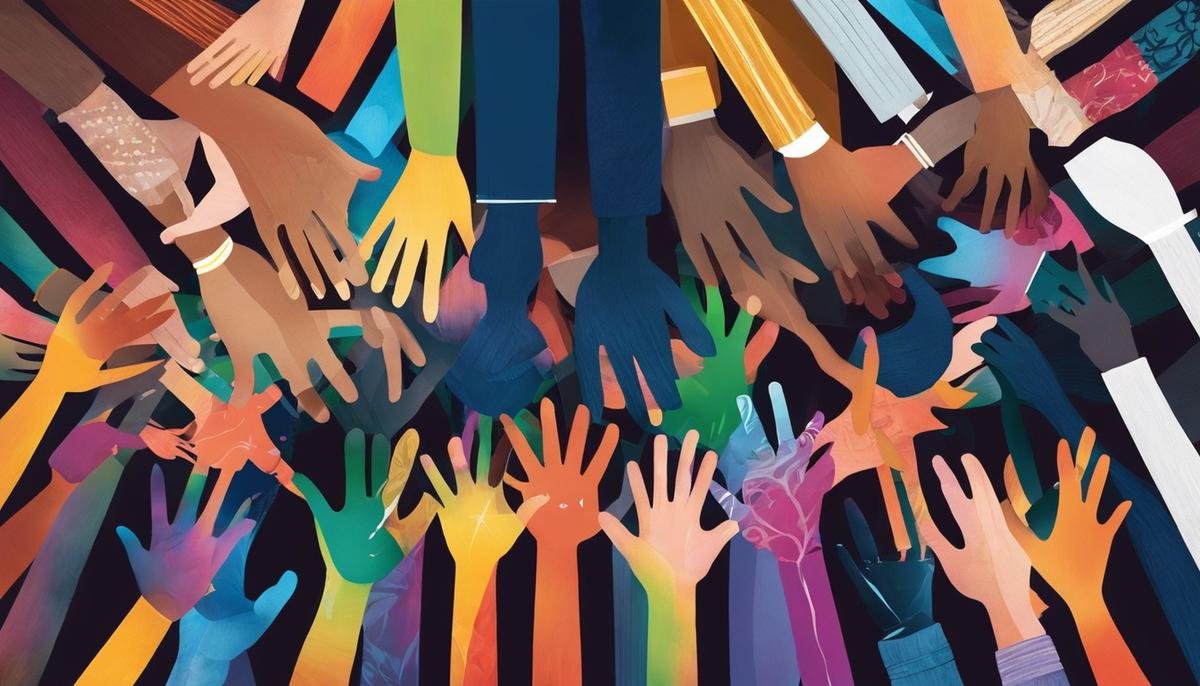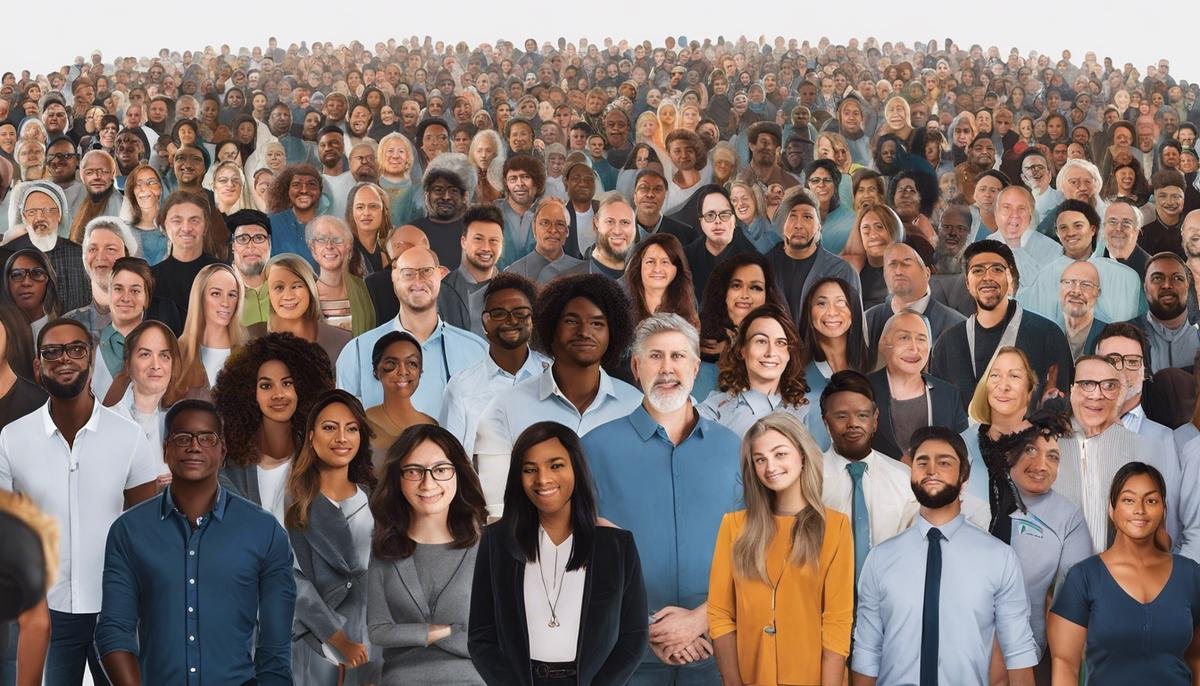
In the fast-paced and evolving landscape of 2023, the acceptance and understanding of neurodiversity have taken center stage, striving to defy the traditional constraints regarding normalcy and cognitive diversity. The Neurodiversity Movement serves as a beacon of social evolution, shining a light on the crucial conversation of neurological differences. It emphasizes that these disparities are not disorders demanding remedy but an integral part of our unique humanity.
This means advocating for a broad societal shift, one that encourages appreciation for all kinds of minds, and champions the benefits of diverse neural representations in parenting, schooling, and overall societal interactions. Imagine a future where neurodivergent individuals are not just tolerated, but genuinely accepted, and understood, with their unique skills and talents recognized and celebrated. That is the heart of the Neurodiversity Movement.
Defining Neurodiversity Movement
Embracing the Spectrum: Understanding the Neurodiversity Movement
Hello, lovely parents! It’s undeniable that we all wear different hats; one of which loves to keep abreast of the latest conversations around nurturing our children. Today, let’s talk about something that’s becoming quite the buzzword in parenting circles – The Neurodiversity Movement. So, what is it really? And more importantly, what does this movement aim to achieve?
The Neurodiversity Movement is a transformative concept that has made its way from the fields of psychology and education right into our homes. Simply put, the movement recognizes and respects neurological differences just as society would appreciate differences in race, ethnicity, gender, or sexual orientation. It’s a fresh perspective that views conditions like Autism, ADHD, Dyslexia, and other neurological diversities not as abnormalities that need to be fixed or ‘cured’, but as natural human variations.
One of the key things this movement encourages us to do is to view our neurodiverse children through the lens of appreciation, rather than trying to ‘normalize’ them to fit societal expectations. Picture, for a moment, a society in which differences aren’t just tolerated, but celebrated. Wouldn’t that be incredible?
At its heart, the Neurodiversity Movement insists on rights and equality for neurodiverse individuals. This movemen aims to decrease stigmatization and segregations. Moreover, it pushes for a more tolerant and inclusive society that comprehends, accepts, and appreciates neurological variety and acknowledges the treasure trove of talents and abilities these individuals possess.
The model idea of viewing somebody as ‘differently abled’ rather than ‘disabled’ is a cornerstone of this movement. Neurodiverse individuals can offer vibrant perspectives and unique problem-solving skills, easily making them stand out as innovators. In our homes, schools, workplaces, and community – these qualities can only enrich us.
So, how can we start seeing the beauty in neurodiversity? Education is key. As parents, understand the ins and outs of your child’s specific neurological makeup. Teach your kids and everyone around you about neurodiversity, foster awareness, and promote inclusion. Embrace this shift in mindset and lifestyle to reflect everything from our language to our attitudes, educational methods, and even design considerations.
At the end of the day, each one of us has something unique and beautiful to contribute to our family, friendships, and our greater community. The Neurodiversity Movement simply seeks to guarantee that everyone – irrespective of their neurological makeup – gets a fair opportunity to do so. After all, a garden is most beautiful when it contains a variety of flowers, isn’t it? Let’s celebrate neurodiversity – the notion that describes our children perfectly – as a bouquet of differences blooming brilliantly together.

Parenting & Neurodiversity
The Power of Conversation: Discussing Neurodiversity at the Dinner Table
Welcome to another warm-hearted chat about all things family, parenting, and home life. Today, we’re delving into the world of neurodiversity and exploring how we can cultivate better understanding and acceptance within our own homes.
Open dialogues at home are a cornerstone of understanding neurodiversity. Dinner time isn’t just for discussing the day’s events or tomorrow’s plans, it’s the perfect opportunity to talk about differences in learning and thinking too. By including discussions around neurodiversity as an everyday conversation topic, it normalizes and depathologizes the concept for everyone. It’s about making the unknown known, fostering respect, and dismantling fear or prejudices before they take root.
Additionally, incorporating educational resources such as books, movies, and online articles focused around neurodiversity into the household can be instrumental. This provides essential context and depth, nurturing a better understanding of neurodiverse experiences. It gives a peek into the life experiences of neurodiverse people, allowing for a greater sense of empathy and connectivity.
Facilitating active participation is another way to embrace neurodiversity at home. Consider planning family activities that accommodate all types of abilities and learning styles. By ensuring that everyone is considered in the plan, it validates the input and presence of every family member, further promoting a holistic understanding of different abilities.
The power of language cannot be overstated when discussing neurodiversity. Building a language environment that encourages words of acceptance, understanding, and respect forms the bedrock for acknowledging and appreciating neurological differences. Refraining from using harmful or stigmatizing labels and promoting the use of empowering and inclusive language remains a substantial part of fostering a neurodiverse-friendly home.
Finally, let’s not forget the essence of embracing neurodiversity: recognizing and appreciating every child’s unique strengths. Everyone has their own ways of perceiving, learning, and contributing to the world. By affirming these unique strengths, families can become emboldened in their attitudes towards neurodiversity, ultimately leading to a warmer, more accepting home environment.
Understanding neurodiversity starts at home. By nurturing these conversations, activities, and environment, we can lay the groundwork for better acceptance and understanding, and foster a better society for our children to thrive in, neurodiverse or not.

Neurodiversity & Schooling
Customizing Education: A Step Towards Greater Inclusion for Neurodivergent Students
The world is that much richer and more beautiful because of the vibrant tapestry of neurodiverse individuals that color it. Different minds bring different perspectives, fresh ideas, and innovative solutions to our schools. With this in mind, it’s crucial to embrace an educational system that respects and supports all students, regardless of their neurological make-up.
A constructive step towards an inclusive educational space involves a fundamental shift in school curricula. Here, the emphasis lies not only on academic pursuits but also on character and social development, emotional well-being, and most importantly, empathy. Integrating neurodiversity education into schools can substantially elevate understanding and tolerance between students.
Revolutionizing the school environment to accommodate neurodivergent students also involves rethinking the physical aspects of classrooms. Employing sensory-friendly components, such as quiet zones, visually calm spaces and varied seating options, can create a comfortable environment, thereby allowing all children to reach their potential.
Moreover, collaboration between special education teachers and regular educators is crucial. By offering integrated teaching workshops, training programs, and shared resources, educators can better serve neurodivergent students while fostering inclusivity. Regular educators, armed with knowledge about neurodiversity, are more apt to identify unique needs and realize more appropriate strategies for each student.
Individualized learning plans offer another component to support neurodivergent student success. Schools should consider tailoring methodologies to suit the learning styles of their different students. Interactive and varied lessons – from project-based learning to hands-on activities and digital tools – can encourage student engagement and provide a multi-dimensional learning experience.
Engaging parents as strategic partners also plays a vital role in supporting neurodivergent students. Regular discussions and meetings with families can facilitate sharing important information and strategies that can be used both at school and home. After all, a child’s development is a team effort that includes teachers, specialist educators, and family members.
Achieving inclusivity in schools also means equal representation for neurodivergent individuals. What better way to encourage empathy, understanding, and acceptance among neurotypical students than by treating their neurodivergent peers as equal, valuable contributors to the school community? Encouraging the leadership of neurodivergent students in clubs, teams, or school committees can communicate a strong message of inclusion, respect, and appreciation to the entire school community.
Furthermore, schools can support neurodivergent students by fostering a culture where open communication is championed and every voice is heard. Promoting a safe space for students to express their thoughts and feelings about their experiences can help teachers and administrators make necessary adjustments.
Lastly, it’s essential to remember that every single student — neurodivergent or not — brings something valuable to the table. The variety of learning styles, perspectives, and abilities they provide can enrich the academic environment, encourage collaborative learning, and cultivate mutual respect and understanding. In the end, creating a supportive, respectful, and inclusive school for neurodivergent students benefits everyone.
The real beauty of education boils down to this: learning about each other’s differences, coming together as a community, and celebrating the unique talents that each student brings to the schoolyard. It’s all about making room for everyone in this party we call life. Through a commitment to adaptation and understanding, schools can create an environment where every child feels valued and has a place to thrive.

The Future of Neurodiversity Movement
The next wave of the Neurodiversity Movement is sure to involve grand measures to ensure that neurodiversity becomes a part of the broader cultural conversation. One area ripe for revolution is the healthcare industry. We’re talking about seeing more medical professionals who understand neurodiversity and can provide appropriate support. Imagine doctors, who not only understand the nuances of neurology but also embrace it, changing the tide from mere treatment to acceptance and respect. Their influence could have a profound effect on societal attitudes towards neurodiversity, setting the stage for a transformative future.
Beyond healthcare, the future of the Neurodiversity Movement may involve reshaping the corporate world. Job interviews could become less about conformity and more about individual strengths and abilities, allowing neurodiverse individuals to shine. Employers might adjust workplace environments to accommodate all workers, including those with divergent neurological styles. This could mean attention to detail in everything from office design to communication methods – imagine receiving your meeting agenda as an infographic!
The future of neurodiversity could also look like normalizing neurodiverse characters in films, TV shows, and books. Media representation is vital – not only for neurodiverse individuals to have their stories told but for the rest of society to understand their experiences. As more neurodiverse narratives permeate mainstream media, society’s perception of neurodiversity can evolve from misunderstanding and fear to understanding and acceptance.
Moreover, the future may see increased strides in social services and policies designed to empower neurodiverse individuals. From housing arrangements that support a wide range of neurological styles to public policies that promote equality and inclusion, we can only hope for a future where neurodiverse individuals feel fully supported and valued.
Lastly, remember the fundamental shift starts at home, in the way we raise our children. The future of neurodiversity might feature parents who not only understand but champion their neurodiverse kids. Kids who grow up with this kind of support will become adults who can confidently navigate the world and understand their own worth.
While there is no crystal ball to predict the exact trajectory of the Neurodiversity Movement, one thing is clear: it’s poised to push boundaries and challenge the status quo. But as we move forward, let’s remember the goal is not to erase differences but to normalize them, to recognize and value them. We’re imagining a future where everyone feels a sense of belonging, where ‘different’ is not just accepted but celebrated. Above all, the future of neurodiversity is about cultivating empathy, respect, and understanding for everyone’s unique neurological style.

Framing the future of the Neurodiversity Movement in 2023, one can anticipate significant advancements in societal consciousness, relentless advocacy for neurodivergent individuals, and influential developments in legislation. The emphasis will not only be on acceptance but on a deeper understanding and incorporation of neurodiversity into the fabric of our society.
It won’t be a smooth ride without challenges, but the resilience and determination of activists, parents, educators, and communities are promising for a future where neurodiverse individuals can thrive in their uniqueness, and be part of a society that cherishes and nurtures their cognitive variances. Ultimately, acceptance shouldn’t be about sameness. It should accommodate differences, as they contribute to the beautiful tapestry of human experience. We now look forward to shaping this future, one neurodivergent human at a time.




